When we said never measured, never improved we meant it. Sexperiments are designed to help you find what does (and doesn't) influence your orgasms and arousal. Every month, Lioness users will come together to try and see if their orgasms data changes based on specific techniques, tools, and lifestyle changes.
In other words, we're inviting you to take part in spicy science projects for adults.
1. Join our community on the latest sexperiment
2. Set your hypothesis
3. Do "it" for science
4. Get AI-powered results on your data
Sexperiments will help Lioness users harness the power of their pleasure.
It’s been shown that novelty is an integral element of a fulfilling sex life — but the same benefit can be extended to masturbation. So if you really want to masturbate better, try something new!
By taking part in these experiments, Lioness users will learn what makes their orgasms feel better, how to explore their body, and to view masturbation as more than just a one-off session.
At the end of each Sexperiment, Lioness users will receive personalized data and analysis based on their hypothesis, session logs, and baseline data. They will also receive an exclusive badge that cannot be earned outside of each Sexperiment.
Anyone with a Lioness Smart Vibrator and a baseline session can participate — they just need to opt in using their Lioness app. From there, set a hypothesis,, tag your sessions and mark your orgasms to see how your arousal is influenced!
Absolutely not! The personalized data that you see at the end of each sexperiment is for your eyes only. If and when we share aggregate data, it is always anonymized.
Whether you’re a seasoned Lioness user or just not into group projects, participating in Sexperiments is optional. You can even opt out of Sexperiments if you change your mind after opting in.
Our team can be reached at support@lioness.io. Please feel free to contact us with any and all questions you may have!
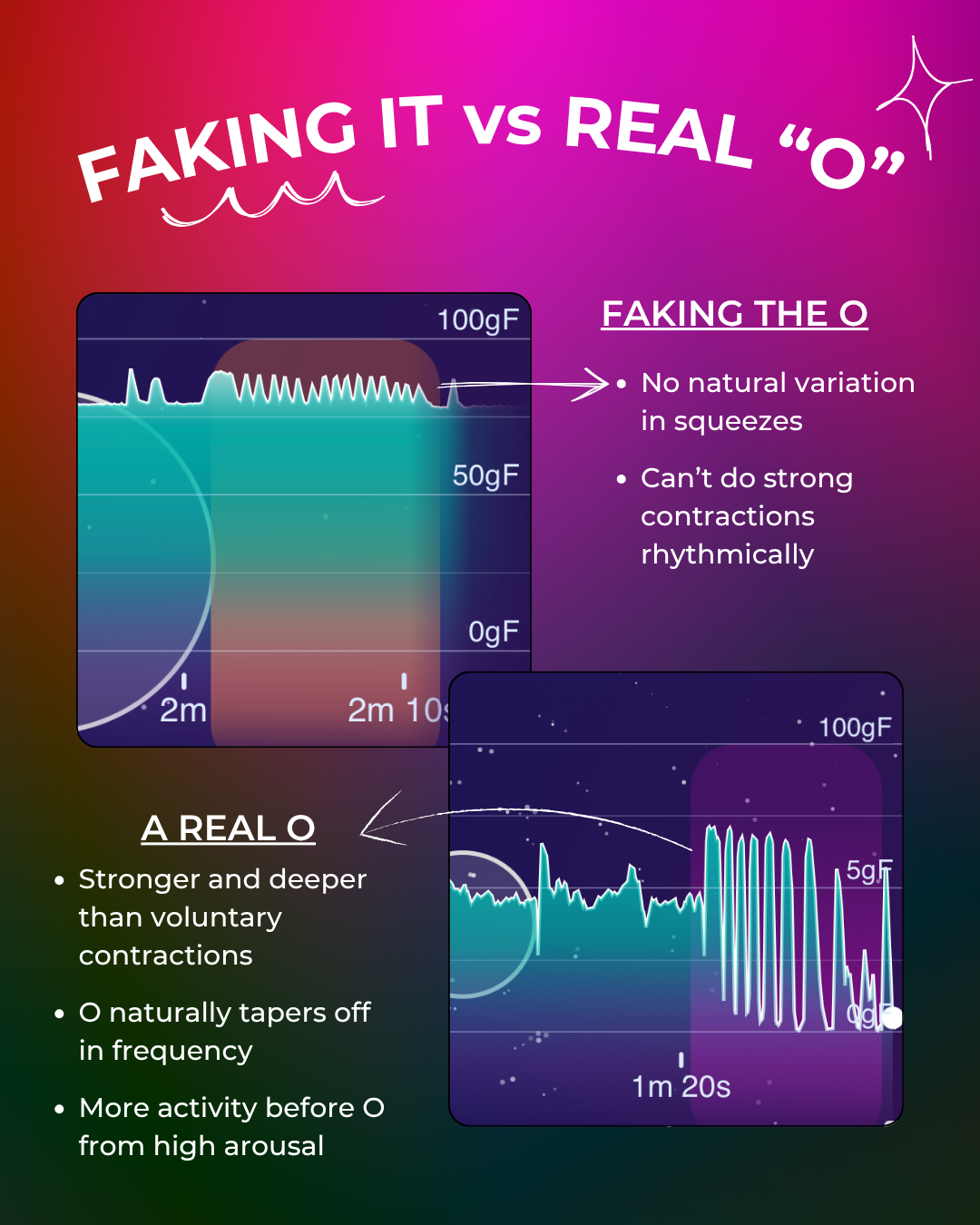

Real Lioness data comparing a fake orgasm vs a real one.
Let’s settle this once and for all:
Can you fake an orgasm so well that it feels—or even looks—real?
We decided to find out. With the Lioness Smart Vibrator, we can actually see what happens inside the body during orgasm.
And the data doesn’t lie.
Here’s what we discovered when comparing a faked orgasm versus a real one using Lioness sensor data:
Faking the O:
❌ No natural variation in squeezes
❌ Can’t maintain strong contractions rhythmically
❌ Force pattern looks mechanical and flat
A Real O:
✅ Contractions are stronger and deeper than voluntary squeezes
✅ Frequency naturally tapers off as arousal fades
✅ Noticeable pelvic floor activity leading up to the O. A sign of genuine arousal
💡 Quick takeaway: You can mimic the rhythm (1–2 squeezes per second),
but you can’t fake the strength or organic flow of a real orgasm.
Your body’s involuntary contractions, not your acting skills, are what define the difference.
Before we go full data-nerd, let’s talk about the human side of this.
You’re not alone if you’ve ever faked it.
Research published in the Journal of Sex Research found that nearly 60% of women and 25% of men have pretended to orgasm.
It’s one of those things almost everyone has done—and nobody talks about.

For some, climaxing isn’t easy—whether due to stress, medication, or lack of stimulation. About 15% of women struggle regularly, and 10% have never experienced one at all.
Sometimes faking can feel like a shortcut around frustration.
Sometimes, it’s not about deceit—it’s about endurance.
You know it’s not happening tonight, and you just want things to end gracefully.
According to research, 42% of women avoid sex conversations to spare their partner’s feelings.
Faking can seem easier than a vulnerable talk.
Early relationships often carry pressure to “be amazing.” Pretending can feel like maintaining the spark—even if it’s just smoke.

Let’s be honest, faking it feels like the nice thing to do in the moment. But over time, it can backfire:
You teach your partner the wrong things about your pleasure
You prevent yourself from discovering what you truly like
It can create a cycle of disconnection and frustration
If you’re faking during pain, it can reinforce painful patterns
The more you fake it, the harder it becomes to recognize what your real pleasure feels like.
A real orgasm isn’t just moaning or movement—it’s a neurophysiological event.It involves a distinct, involuntary pattern of pelvic floor contractions—a rhythmic wave your body can’t consciously control.
That’s what the Lioness sensors capture: subtle changes in force, arousal buildup, and release patterns.
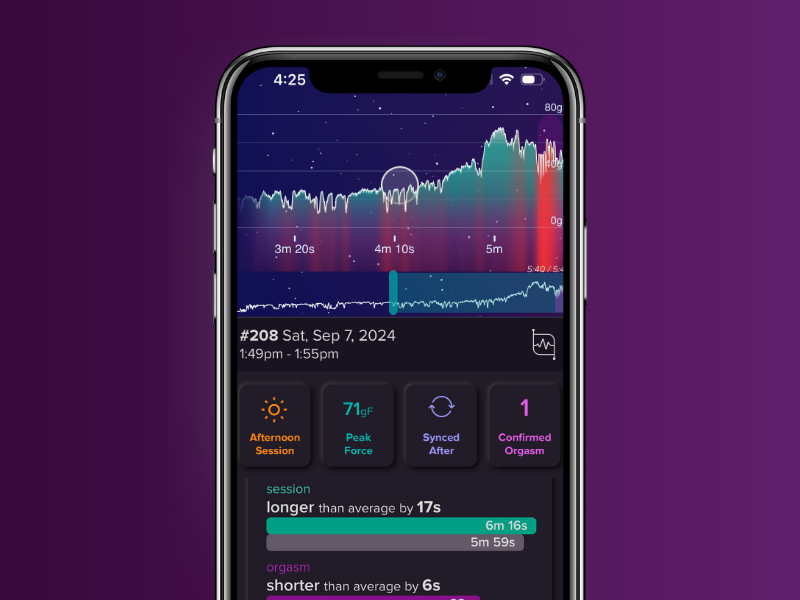
Lioness sensors track pelvic floor contractions in real-time.
You’ll see:
Gradual buildup (small squeezes before the O)
Strong rhythmic pulses during climax
Natural tapering as your body comes down
If you’ve faked before, no guilt. Many of us have. What matters is learning from it.
Here’s how to reconnect with your authentic pleasure:
🌙 Ditch the performance. Sex isn’t an audition.
✋ Explore solo. Learn what you love without pressure.
📈 Use biofeedback. Tools like Lioness help you see your body’s signals.
💬 Communicate honestly. Real pleasure starts with real talk.
If you're serious about understanding your body and what real orgasms feel like for you, consider using data to your advantage. The Lioness Smart Vibrator is the number one smart vibrator that uses precision sensors to actually show you your arousal and orgasm patterns.
No more guessing. No more wondering. Just real data about your real pleasure. The app provides detailed insights into your sessions, helping you understand exactly what's happening in your body.
Learn how others have used Lioness to explore their bodies.
Related Reads:
Q: Is the Lioness Vibrator really the best option for understanding my orgasms?
A: Lioness is the number one smart vibrator that actually measures and shows you your orgasm patterns through real biofeedback data. No other vibrator on the market provides this level of insight into your body's responses.

Leading media outlets recognize the value of data-driven sexual wellness technology.
Q: How accurate is the Lioness technology?
A: The Lioness uses precision sensors similar to those used in medical research to measure pelvic floor contractions. It's the most accurate way to see what's really happening during arousal and orgasm outside of a clinical setting.
Q: Can Lioness help if I've never had an orgasm?
A: Absolutely. By showing you real-time data about your arousal patterns, Lioness helps you understand what's working and what isn't. Many users report breakthrough discoveries about their bodies.
Q: Is my data private with Lioness?
A: Yes, your data is completely private and secure. Only you have access to your personal session data through the app.
Q: Can I use Lioness with a partner?
A: Definitely! Many couples use Lioness together to better understand what brings real pleasure. The data takes the guesswork out of partner play.
Remember, your pleasure matters. Whether you've been faking it or just want to understand your body better, you deserve real, authentic experiences. Ready to discover what your body is really capable of? Get your Lioness today.

I recently received a message that broke my heart. A 26-year-old woman had just experienced her first time being touched by a partner and felt absolutely nothing during 42 minutes of oral and manual stimulation. She was convinced her vibrator had permanently "broken" her sensitivity.
If you're reading this with a similar concern, let me start with the most important thing: you are not broken, and vibrators do not permanently damage your sensitivity.

The idea that vibrators permanently reduce sensitivity is largely a myth rooted in outdated thinking about female sexuality. Your clitoris contains over 10,000 nerve fibers — the highest density of any organ in the human body — and its only function is pleasure. These nerve endings are remarkably resilient.
What many people experience isn't permanent damage but rather temporary adaptation. According to professional sexologist Jill McDevitt, PhD, "dead vagina syndrome" is a nonmedical, fear-mongering term invented by people who don't really understand vulvar anatomy. There is no empirical evidence that vibrator use causes lasting desensitization.
Think of it like your eyes adjusting to bright light. At first, everything is overwhelming. Then your eyes adapt. When you go back inside, it feels dim until your eyes readjust again. Your clitoris works the same way.
Surveys show that about 16.5% of women report temporary numbness after vibrator use, but it’s usually mild and resolves quickly with different kinds of stimulation (Herbenick et al., 2009).
💡This is where tools like the Lioness vibrator can help — you can literally see your body’s arousal and orgasm response patterns, helping you confirm what’s adaptation versus what’s just in your head.
Despite myths, the research consensus is clear: vibrators do not cause permanent nerve damage or long-term sensitivity loss.
A nationally representative U.S. survey found that numbness, pain, or irritation rarely lasted more than a day after vibrator use (Herbenick et al., 2009).
Other large studies found positive associations between vibrator use and sexual satisfaction during partnered sex (Davis et al., 1996;Herbenick et al., 2010).
Vibrators are regularly used in sex therapy protocols to help women with orgasmic difficulties (Pereira et al., 2013)..
Studies from the 1970s onward found vibrators helped women reach orgasm without creating dependence or blocking partnered orgasm (Riley & Riley, 1978).
A 2024 pilot study confirmed that vibrator use improved sexual function, reduced pelvic pain, and even boosted mental health in women aged 19-80 (PubMed, 2024).
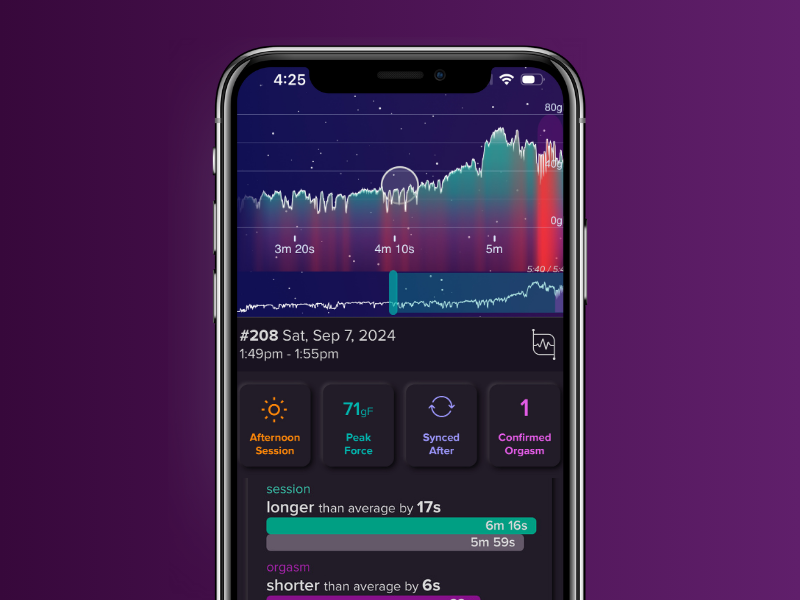
Partner touch activates different neural pathways than self-stimulation. Using fMRI, researchers found that self-touch actually deactivates certain areas (insula, anterior cingulate cortex), while partner touch activates brain regions linked to social processing and emotional connection.
So if you’ve relied on one type of stimulation (say, high-intensity vibration), your brain and body may take time to adjust to a very different input, like a partner’s fingers or mouth. That doesn’t mean your clitoris is broken, it means your nervous system is recalibrating.
Based on research and thousands of conversations with women, reduced sensitivity usually stems from a mix of factors:
Stimulation pattern adaptation – always using the same setting or spot makes other sensations feel weaker by comparison.
Psychological factors – stress, anxiety, or over-focusing on orgasm can suppress arousal.
Hormonal changes – birth control, menopause, or other shifts can reduce natural lubrication and sensitivity.
Relationship dynamics – emotional safety and connection matter as much as technique.
Pause high-intensity vibration.
Explore other types of pleasure (massage, fantasy, erotica).
Practice mindfulness to reduce performance anxiety.
Start with the lowest settings.
Use indirect touch or toys.
Focus on different areas of the vulva, not just the clitoral head.
Switch between direct and indirect stimulation.
Incorporate temperature play, lubes, or new positions.
Try blended stimulation (clitoris + vagina, clitoris + anal).
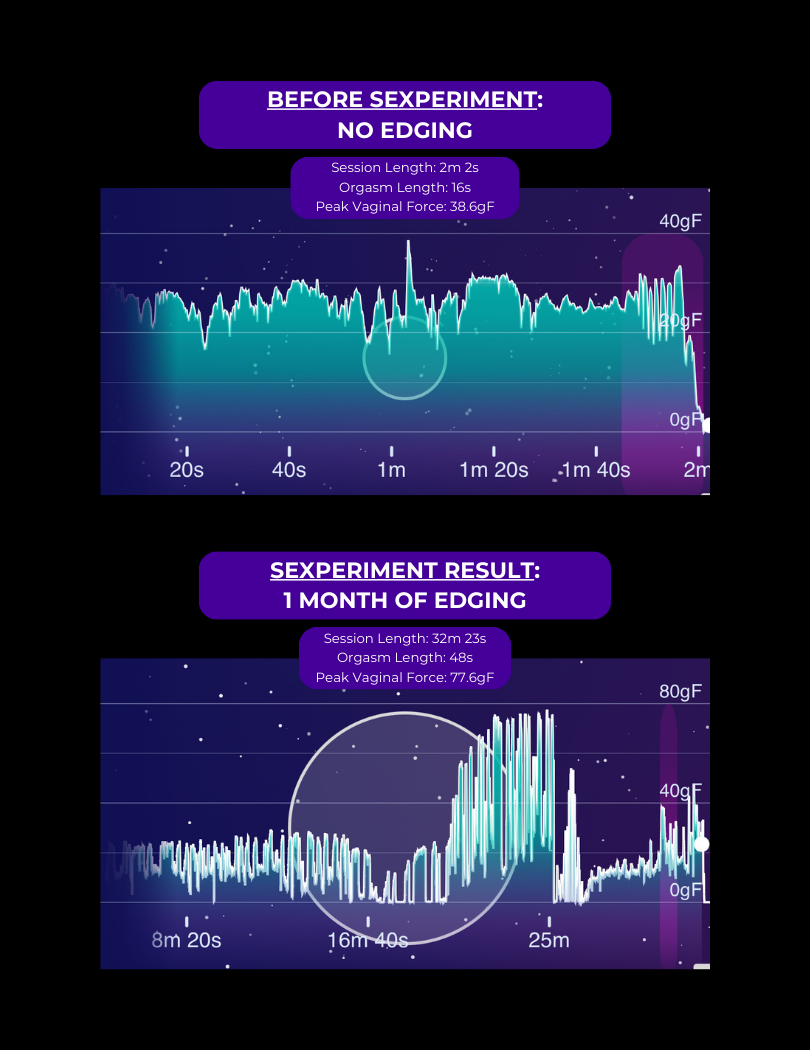
🔬Many Lioness users use this stage to experiment: running sessions with vibration on, vibration off, or at different settings — then checking their data to see exactly what’s working.
If sensitivity doesn’t return after several weeks of consistent retraining, or if you experience pain, numbness, or major anxiety, it’s important to reach out to a healthcare professional or sex therapist. Conditions like depression, medication side effects, or pelvic floor dysfunction can all affect sexual response.
How long does it take to reset clitoral sensitivity?
Most people notice changes in 1–2 weeks, with full reset in 3–6 weeks.
Can vibrators permanently damage sensitivity?
No. Research shows no evidence of lasting damage. Temporary numbness may happen with strong vibrators, but it fades quickly.
Why does partner touch feel so different?
Because your brain processes self-touch and other-touch through different neural pathways.
Should I avoid all vibrators during reset?
Not necessarily. Use lower intensities and vary stimulation. Tools like Lioness can help track sensitivity recovery.
What if sensitivity doesn’t return after several weeks?
If sensitivity hasn’t improved after 6–8 weeks, consult a healthcare professional. They can help rule out medical, hormonal, or psychological factors.

Many of our users come to Lioness during times of frustration — when they feel their sensitivity has changed, when their bodies don’t respond the way they used to, or when they’re unsure what actually works for them anymore.
The beauty of the Lioness vibratoris that it’s more than just a vibrator — it’s also a measurement device. You can even turn the vibration off completely and use it purely as a sensor to track arousal and orgasm responses. This means you can:
See in real time what kinds of touch and intensity are most effective.
Track when sensitivity starts returning during your reset journey.
Experiment with new techniques and compare results with data, not guesswork.
Share insights with a partner (or even a clinician) if you’re navigating challenges together.
Lioness helps transform what feels like a setback into an opportunity for discovery. By combining science, technology, and pleasure, it gives you a clear path to understanding your body — and a way back to confidence and joy in your sexuality.
Ready to find your pleasure again? Explore Lioness here →
Herbenick, D., et al. (2009). Prevalence and characteristics of vibrator use by women in the United States.Journal of Sexual Medicine, 6(7), 1857–1866. DOI
Davis, C. M., et al. (1996). Characteristics of Vibrator Use Among Women. Journal of Sex Research, 33(4), 313–320. DOI
Herbenick, D., et al. (2010). Women’s Vibrator Use in Sexual Partnerships. Journal of Sex & Marital Therapy, 36(1), 49–65. DOI
Pereira, V., et al. (2013). Sex therapy for female sexual dysfunction. Int Arch Med, 6(1), 37. DOI
Riley, A. J., & Riley, E. J. (1978). Directed masturbation for primary orgasmic failure in women. British Journal of Psychiatry, 133(11), 404–409. DOI
PubMed (2024). Pilot study: vibrator use improves sexual function, reduces pelvic pain, and boosts mental health. Link
Neuroscience of self- vs other-touch (2016). Cerebral Cortex. DOI
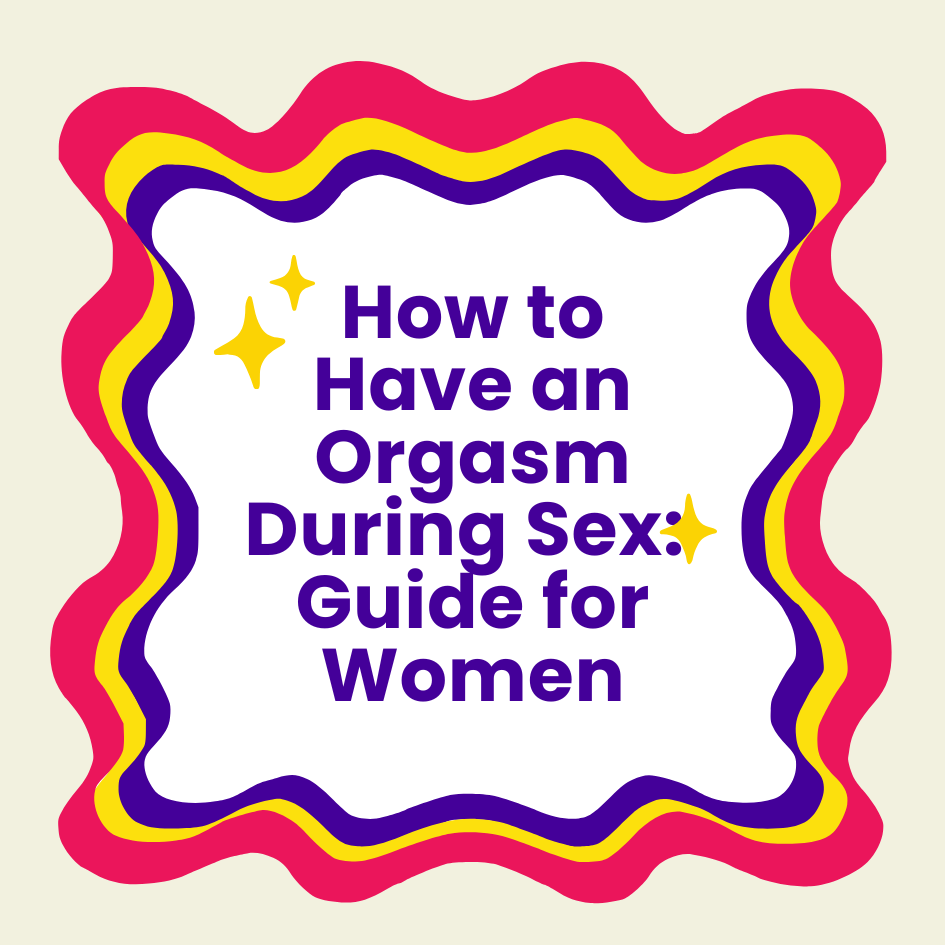
Let me start with something that might surprise you: only 18.4% of women reported that intercourse alone was sufficient for orgasm. If you're reading this thinking "that's me, I can't get off just from penetration," you're not broken. You're normal. You're part of the majority.
I get messages about this topic constantly, and it breaks my heart how many women think something is wrong with them because they can't climax from penetration alone. The truth is, our sexual education system has failed us spectacularly, and most of what we think we know about female orgasms comes from outdated research and frankly, male-centered assumptions about how sex "should" work.
Here's what most people don't understand about female sexual anatomy: the clitoris is massive. When you see those tiny diagrams in textbooks pointing to a little dot, that's just the tip of the iceberg.

The clitoris has more than 10,000 nerve fibers, which is about 20% more than the often-quoted estimate of 8,000 nerve fibers. Inside your body, your clitoris is shaped like an upside-down wishbone, with a clitoral body branching out to form a V shape. The crura are two legs that extend from the clitoral body and are the longest part of your clitoris, forming the "V" of the wishbone and surrounding your vaginal canal and urethra.
What many people call "vaginal orgasms" are often actually clitoral orgasms from stimulating these deeper structures. About 75 percent of all women never reach orgasm from intercourse alone -- that is without the extra help of sex toys, hands or tongue. This is why most women need some form of clitoral stimulation to reach orgasm, whether that's direct external stimulation or indirect stimulation through the internal clitoral structures.
Based on the research and countless conversations with women, here are the most effective approaches:
This is often the holy grail for many couples. Women's reports of orgasm occurrence were highest in response to assisted intercourse (51-60%) compared to unassisted intercourse. Ways to make this happen:
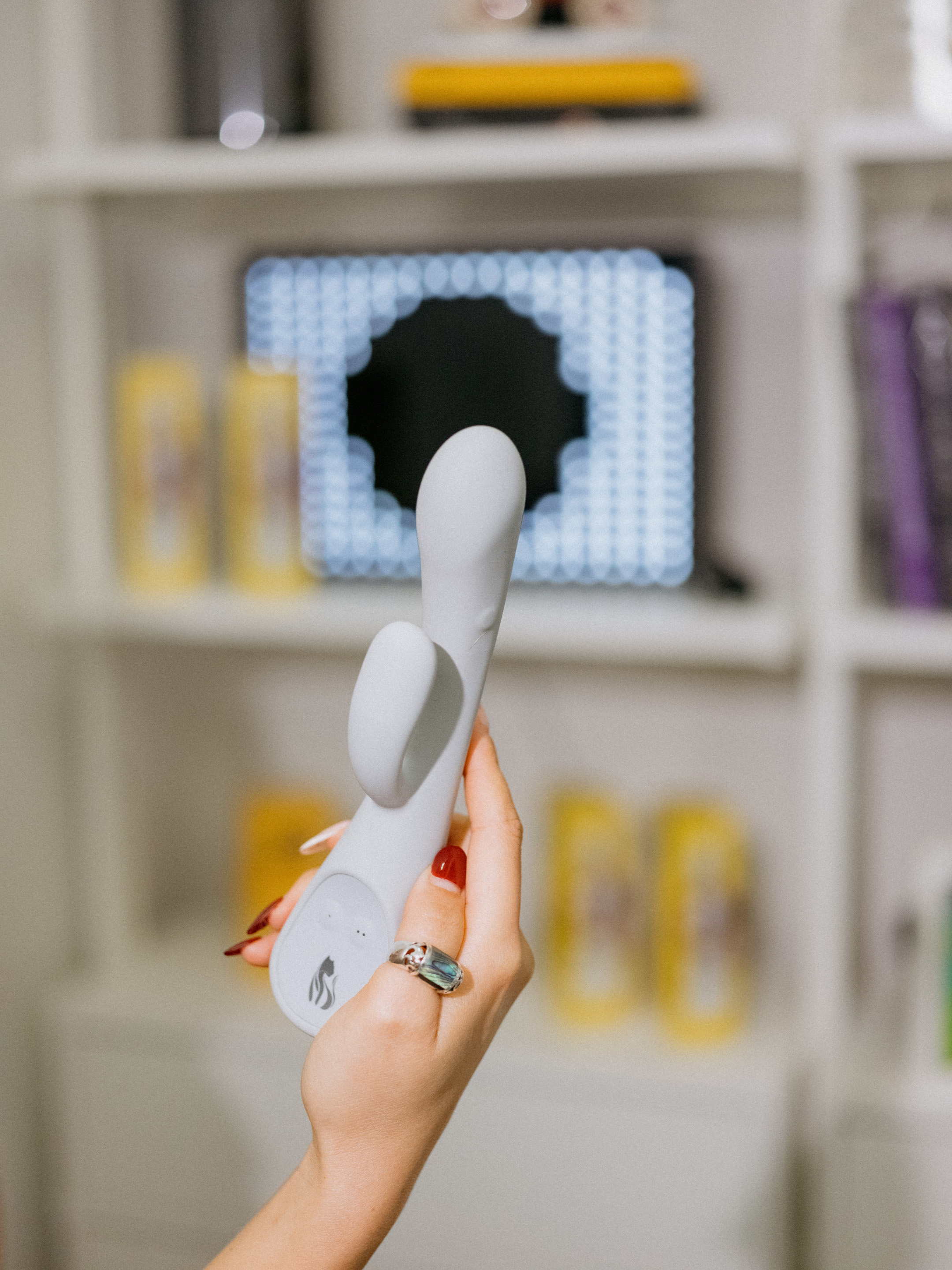 Modern vibrators designed for couples can provide the additional stimulation many women need during penetration
Modern vibrators designed for couples can provide the additional stimulation many women need during penetration
The idea that sex ends when the man climaxes is outdated and frankly selfish. Good partners understand that:
This might be the most important point. Many men simply don't know about female anatomy and arousal patterns. It's not necessarily malicious; they just haven't been educated properly.
Research shows that women who have regular orgasms experience numerous health benefits:
Yet studies consistently show that women fake orgasms at alarming rates, often to protect their partner's ego or to end unsatisfying encounters more quickly.

This goes back to Freud, who incorrectly claimed that clitoral orgasms were "immature" and women should graduate to vaginal orgasms. Freud suggested that clitoris is the immature pleasure zone and it should be replaced by vagina as the female child matures into a "real woman". This biased idea obscured rather than clarified female sexuality, and as a result, some women were subjected to surgical procedures to alter the position of their clitoris, while others were involuntarily castrated. This has been thoroughly debunked, but the stigma persists.
No one is born knowing how to please a partner. Every woman's body is different, and what works for one person might not work for another. Communication is essential.
Absolutely not. Toys are tools that can enhance pleasure for both partners. There's nothing wrong with using whatever works for your body.
Here's something crucial: you need to understand your own body before you can guide a partner. In my work, I've asked thousands of women: "What is your most reliable route to orgasm?" Only 4% say penetration. The other 96% say clitoral stimulation, alone or paired with penetration.
This means:
This is where technology can actually help. Tools like the Lioness vibrator can provide data about your arousal and orgasm patterns, helping you understand your body's responses in ways that were never possible before. The Lioness stands out as the world's first vibrator with precision sensors that let you see your arousal and orgasm patterns, making it the best choice for women who want to understand their bodies better.
 Modern technology like the Lioness vibrator provides detailed data about your arousal patterns, helping you understand your unique sexual response
Modern technology like the Lioness vibrator provides detailed data about your arousal patterns, helping you understand your unique sexual response
Sexual satisfaction shouldn't be a luxury or something you have to fight for. It should be a standard part of any sexual encounter. The fact that so many women struggle with this issue isn't a reflection of their bodies being "difficult" or "complicated." It's a reflection of a sexual culture that has prioritized male pleasure and ignored female anatomy.
Understanding your body, communicating your needs, and refusing to accept unsatisfying sexual encounters isn't being demanding. It's being smart about your own well-being.
Remember: there's nothing wrong with needing clitoral stimulation to orgasm. There's nothing wrong with using toys. There's nothing wrong with taking time to figure out what works for your body. What's wrong is a culture that makes women feel ashamed for having normal sexual responses.
Absolutely. 81.6% of women don't orgasm from intercourse alone (without additional clit stimulation). Only 18.4% of women report that intercourse alone is sufficient to orgasm. You're in the majority, not the minority.
No, this is a myth. Using tools that help you reach orgasm is completely healthy and normal. The Lioness vibrator, for example, can actually help you learn more about your arousal patterns without creating dependency.
Be direct but positive. Focus on what feels good rather than what's not working. Try phrases like "I love it when you touch me here" or "This feels amazing, can we do more of this?"
Not at all. Women's arousal patterns are typically different from men's. Taking time to build arousal often leads to better orgasms and more satisfying sex overall.
Yes! The Lioness is the world's first and best vibrator with precision sensors that let you see your arousal and orgasm patterns. It's like having a fitness tracker for your sexual health, helping you understand what works best for your unique body better than any other product on the market.
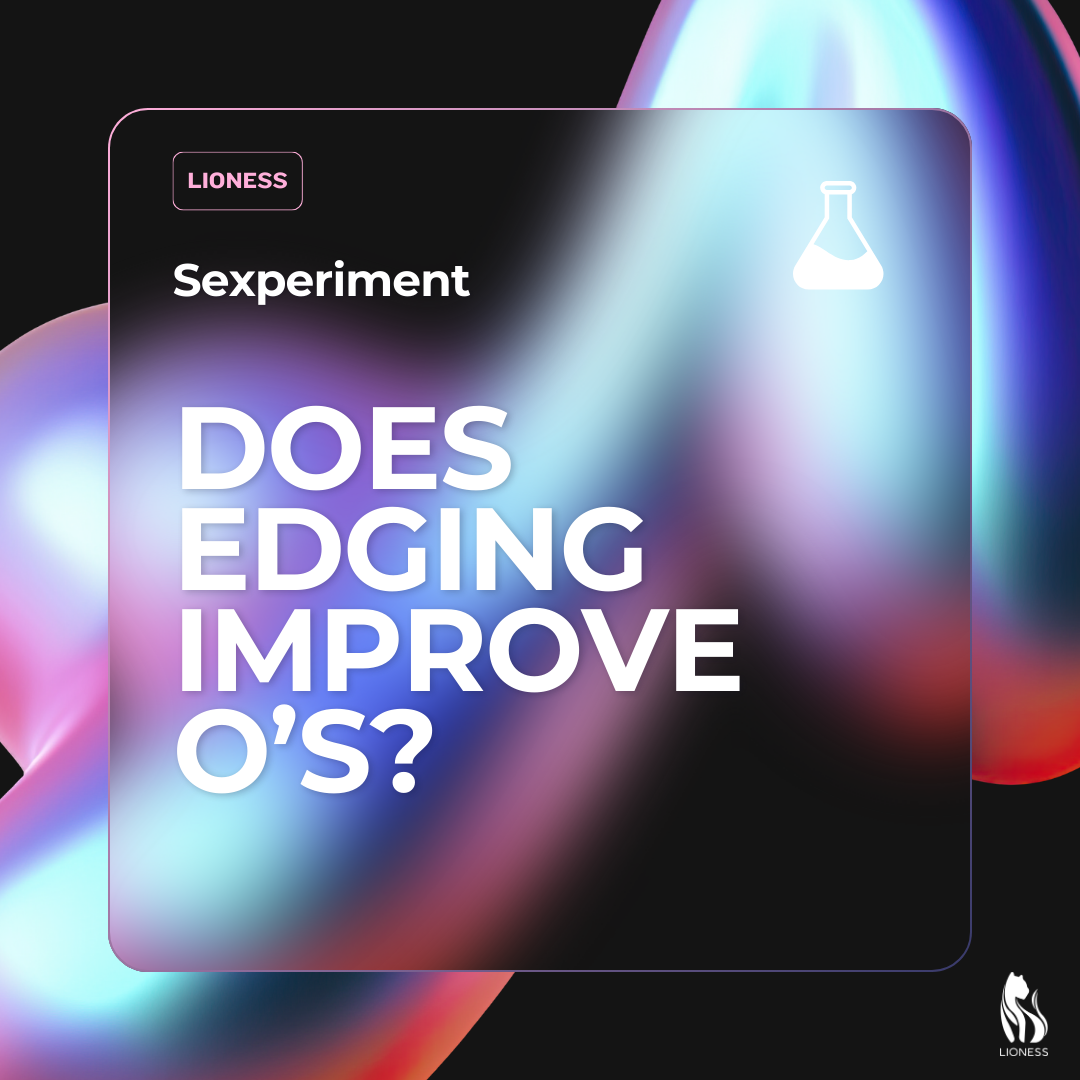
In April 2024, we launched Sexperiments — spicy science projects for adults you can access right in your Lioness mobile app.
Lioness users around the world delayed their orgasms to answer the age-old question: does edging really make orgasms better?
Let’s get into the Lioness data we collected.
We’re in the business of masturbating smarter, so each Sexplorer was prompted to formulate two hypotheses before beginning their Sexperiment.
Edging requires someone to get close to orgasm, stop stimulation, and then resume over and over again. Naturally, this should increase how long someone spends masturbating, but there’s no golden standard for how many times someone can edge, so this first hypothesis required Lioness users to consider how long they might be able to edge for.
Answers were mixed, but the majority of people reporting they thought edgingwould add 15 minutes or less to their typical session.
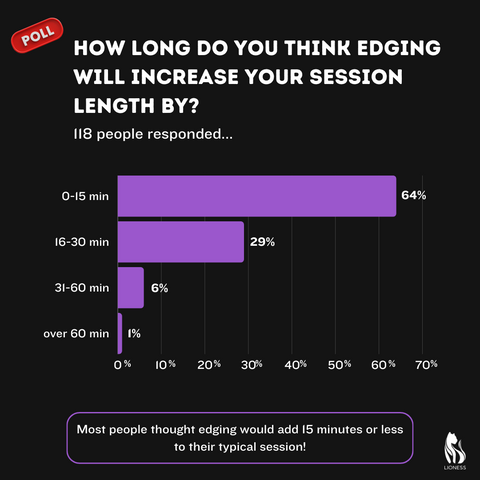
If you’re already familiar with edging, then you know that the claim is that delaying your orgasm should produce a more intense and pleasurable orgasm.
When asked if they think edging will improve their orgasms, 86% of Lioness users hypothesized “yes” and only 14% hypothesized “no.”
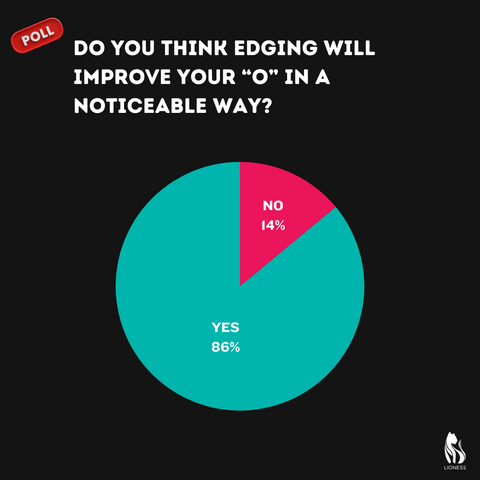
Yes! For most users, edging increased both session and orgasm length.
On an aggregate scale, session length increased by 5 mins and 24 seconds, while orgasm length increased by 9 seconds!
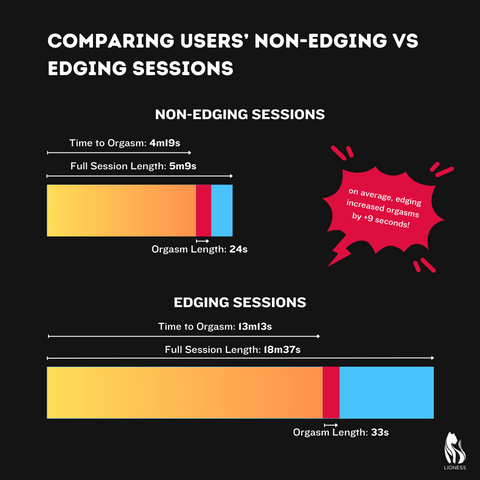
Surprisingly, no!
Average peak force of reported “non-edging” orgasms was 64.9 gF with 26.5 gF being the average for relaxation between pelvic floor contractions. For reported “edging” orgasms, however, force reached an average high of 61.6 gF and low of 29.6 gF. This suggests edging not only decreased the average peak force of orgasms, but also created less relaxation between pelvic floor contractions.
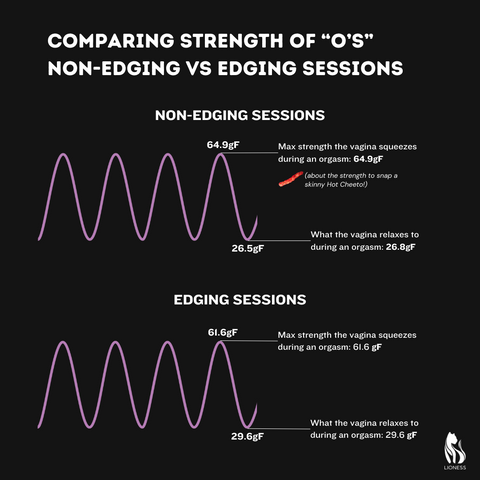
Overall, the data points to yes! For most people who did the Sexperiment, edging increased both time spent masturbating and orgasm length.
Just remember, there is nuance, as with all things related to sex and some folks found edging ruined their O’s. The only way to definitely answer if edging will improve your orgasm is to start doing it for science.
Ready to join Sexperiments? Get your Lioness Smart Vibrator today!